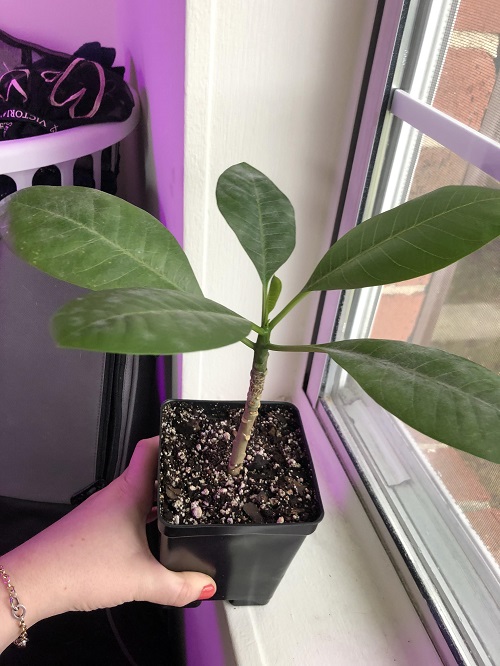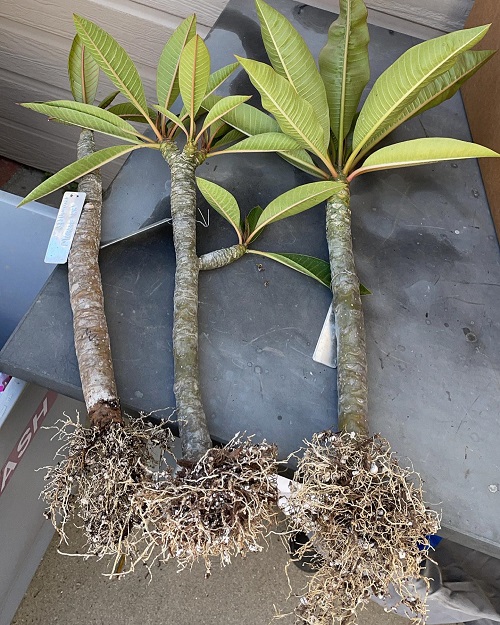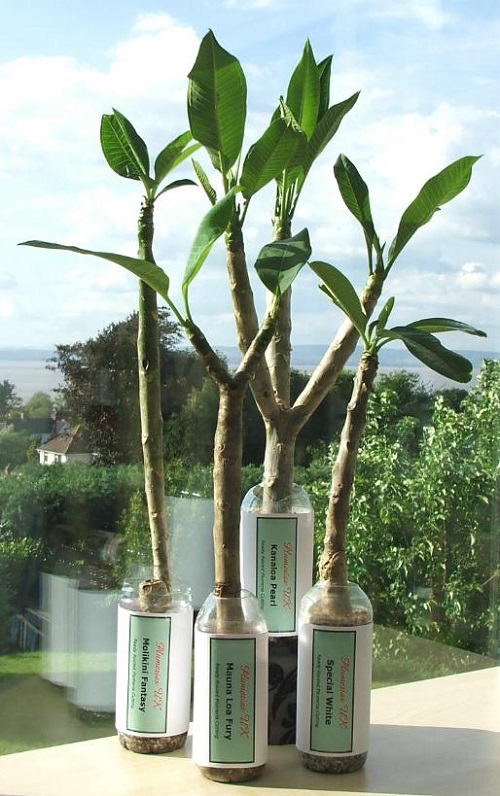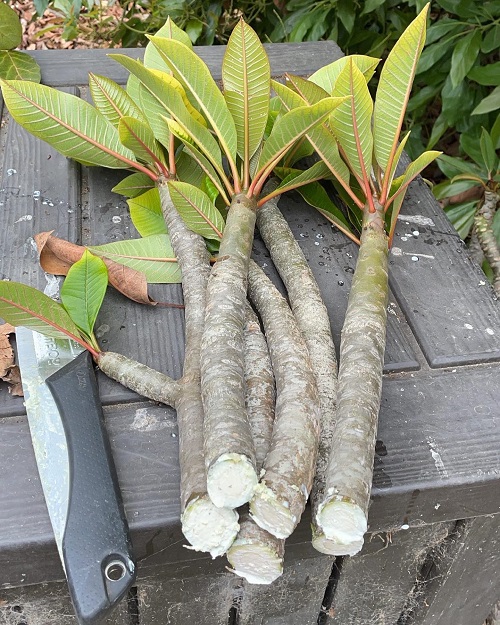Discover the art of cultivating with How to Grow Plumeria from Cuttings and get a guaranteed propagation of this flower!

This step-by-step How to Grow Plumeria from Cuttings guide will empower you with the knowledge and techniques needed to propagate this remarkable flower successfully!
Here is How to Grow a Jade Plant from Cuttings
Best Plumeria Varieties to Grow from Cuttings
When growing Plumeria from cuttings, you should go for the following Plumeria varieties as they are suited for the same:
- Plumeria ‘Celadine’
- Plumeria ‘Singapore White’
- Plumeria ‘Kauka Wilder’
- Plumeria ‘Pink Pansy’
- Plumeria ‘Golden Arrow’
- Plumeria ‘Mai Tai’
- Plumeria ‘Singapore Red’
- Plumeria ‘Aztec Gold’
- Plumeria ‘Samoan Fluff’
- Plumeria ‘Purple Jack’
Here are Different Types of Plumeria Varieties
When is the Right Time to Propagate a Plumeria Plant?

Before you ask – How to Grow Plumeria from Cuttings, it is important to know when to propagate it. The best time to grow a Plumeria plant is typically during the warm months of spring and early summer when the plant is in its active growth phase. This period provides favorable conditions for successful root development and establishment of cuttings.
Plumerias thrive in warm temperatures, ideally ranging between 60-85°F (15-29°C). It’s important to avoid propagating during winter or colder months, as lower temperatures can inhibit rooting and increase the chances of failure.
However, if you reside in a warm climate zone (such as USDA Zones 9 to 11) or a frost-free region, you may have more flexibility and can propagate Plumeria at any time, including winter.
Propagate Any Plant Cutting Quickly Using this Trick
How Long Does It Take to Propagate Plumeria?

When propagating Plumeria cuttings, you can expect the process to take around 6-8 weeks or even longer for roots to fully develop and establish. The duration can vary based on factors like environmental conditions and the specific Plumeria variety you’re working with.
Follow these clever things when plants are young
Ideal Size of Cutting for Propagating Plumeria
For propagating Plumeria, the ideal size of the cutting is typically around 10-15 inches in length. This size allows for ease of handling and successful establishment. It’s important to choose healthy, mature stems to maximize the chances of successful propagation.
How to Grow Plumeria from Cuttings?
Things You’ll Need
- Pruning shears or a sharp knife
- Rooting hormone
- Potting mix (well-draining)
- Planting pots or containers
- Plastic bags or humidity dome
- Watering can or spray bottle
1. Selecting and Preparing the Cuttings
- Choose healthy and mature stems for cuttings, preferably 10-15 inches long.
- Use pruning shears or a sharp knife to make a clean cut just below a leaf node.
- Allow the cuttings to dry and form a callus for a few days before planting.
2. Applying Rooting Hormone
- Dip the bottom end of the cuttings into a rooting hormone powder or gel.
- Gently tap off any excess hormone to avoid overdosing.
Learn about Using Aloe Vera as Rooting Hormone here
3. Preparing Potting Mix
- Use a well-draining potting mix, such as an equal blend of perlite, sand, and peat moss.
- Fill planting pots or containers with the potting mix.
4. Planting the Cuttings
- Insert the bottom end of the cuttings into the potting mix, burying about one-third of the length.
- Ensure the potting mix is in firm contact with the cutting.
5. Providing Proper Care
- Place the planted cuttings in a warm and sunny location, preferably with temperatures around 75-85°F (24-29°C).
- Water the cuttings thoroughly but avoid overwatering, as Plumerias prefer slightly dry conditions.
- Place a plastic bag or humidity dome over the cuttings to create a greenhouse-like environment.
Here is Everything About Growing Plumeria in Pots
7. Monitoring and Root Development
- Check the cuttings regularly for signs of root development, such as new growth or resistance when gently tugged.
- Mist the leaves occasionally to maintain humidity within the plastic bag or humidity dome.
8. Transplanting
Once the cuttings have developed strong roots (usually after 6-8 weeks), they can be transplanted into larger pots or directly into the garden.



